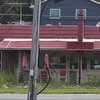Decision-making clarified
GUILDERLAND The school district here is still refining the shared decision-making plan required by the state for a dozen years and instituted initially in Guilderland nearly three decades ago.
Guilderland began its practice of participatory management, letting staff help run the schools, in the late 1970s. In the mid-nineties, it added parents to the mix, as required by the state.
Now building cabinets in each school the high school, the middle school, and the five elementary schools help in making a wide range of recommendations.
Every two years, school districts are required by the state to review and update their plans. This year, Guilderland made just one change. Each building principal is to clarify the decision-making level for major decisions, which may be made in three ways:
Level I represents a decision made by consensus or by a majority of stakeholders;
Level II represents a leadership decision influenced by input from stakeholders; and
Level III represents a unilateral leadership decision.
"Some decisions just need to be made by a principal," Nancy Andress told the school board Tuesday night, as she reported on the biennial review.
Andress is the districts superintendent for instruction and she co-chaired a Jan. 18 meeting of stakeholders with Superintendent Gregory Aidala. The group reviewed the districts plan and agreed to clarify the types of decisions administrators make.
In a report to the board, Andress wrote what each building principal had said was accomplished by that schools cabinet.
Peter Brabant, the principal of Altamont Elementary School, for example, reported that his cabinet had looked at concerns for larger class size, researching multi-age programs, making visits, and developing a recommendation.
Each school, as well as the board, had to check off how successful they were in meeting each of six components: Educational issues subject to shared decision-making, involvement of all parties, means and standards used to evaluate improvement of student achievement, accountability for decisions, dispute resolution process, and coordination of state and federal requirements for parental involvement.
In each case, except where the component was not addressed, the highest level of success was checked off with just three exceptions. Altamont Elementary in two instances checked off one level down from the top "moderate implementation and success" for dispute resolution and for standards used to evaluate student improvement. Guilderland High School also checked off that category for standards used to evaluate student improvement.
The high-school cabinet is working on building community, Andress said in her report, and has mapped out what is going well and where the gaps are. The school has a new principal after having had an interim principal for half-a-year and a two-year principal before that.
"What does it mean""
Board member Colleen O’Connell said she had heard from parents on "different sides" of a recent school-security debate that "meaningful shared decision-making did not take place" with that issue.
This fall, monitors were placed at the front entrances to the districts five elementary schools, on the recommendation of a district subcommittee that had studied school security. But the school board ultimately stopped short of the subcommittees recommendation to lock the schools front doors.
"We could have done a better job," agreed Andress of involving stakeholders in the decision-making process on school security.
"What does it mean"" asked school board member Peter Golden.
"We should have done more work with the building cabinets and PTA’s," said Andress.
Golden asked if shared decision-making involved a vote or if it was a non-binding search for opinion.
"It just makes a lot more sense to get as much feedback as possible...There were some hard feelings," said Andress.
Shared decision-making is regulated by the State Education Department, said board President Gene Danese. While the board is not bound by the decisions made, he said, "We do want their input and we value it."
Board member Thomas Nachod asked about the committee of volunteers that reviews the district’s budget proposal each year. He said it was conceivable that the presentation this year could "contain cultural shifts in our philosophy."
"Do major structural changes have to go through building cabinets and PTA’s"" asked Nachod.
"It’s kind of like Level II," responded Superintendent Aidala, referring to the second level of decision-making now clarified in Guilderland’s plan.
After the budget-review sessions are complete, he said, "It goes back to the board to provide direction to the administration."
Board Vice President Linda Bakst said that, when she used to be a member of the building cabinet at Westmere Elementary School, in the first rounds of budget discussions, there were "conversations about what was percolating."
She went on, "Shared decision-making to me is a misnomer...The principal makes the decision, just like we’re making the decision."
Board member Catherine Barber pointed out that, traditionally, the citizens committee has not been charged with reaching a consensus on the budget.
"We’re listening to a wide variety of opinions on a wide variety of topics," she said.


